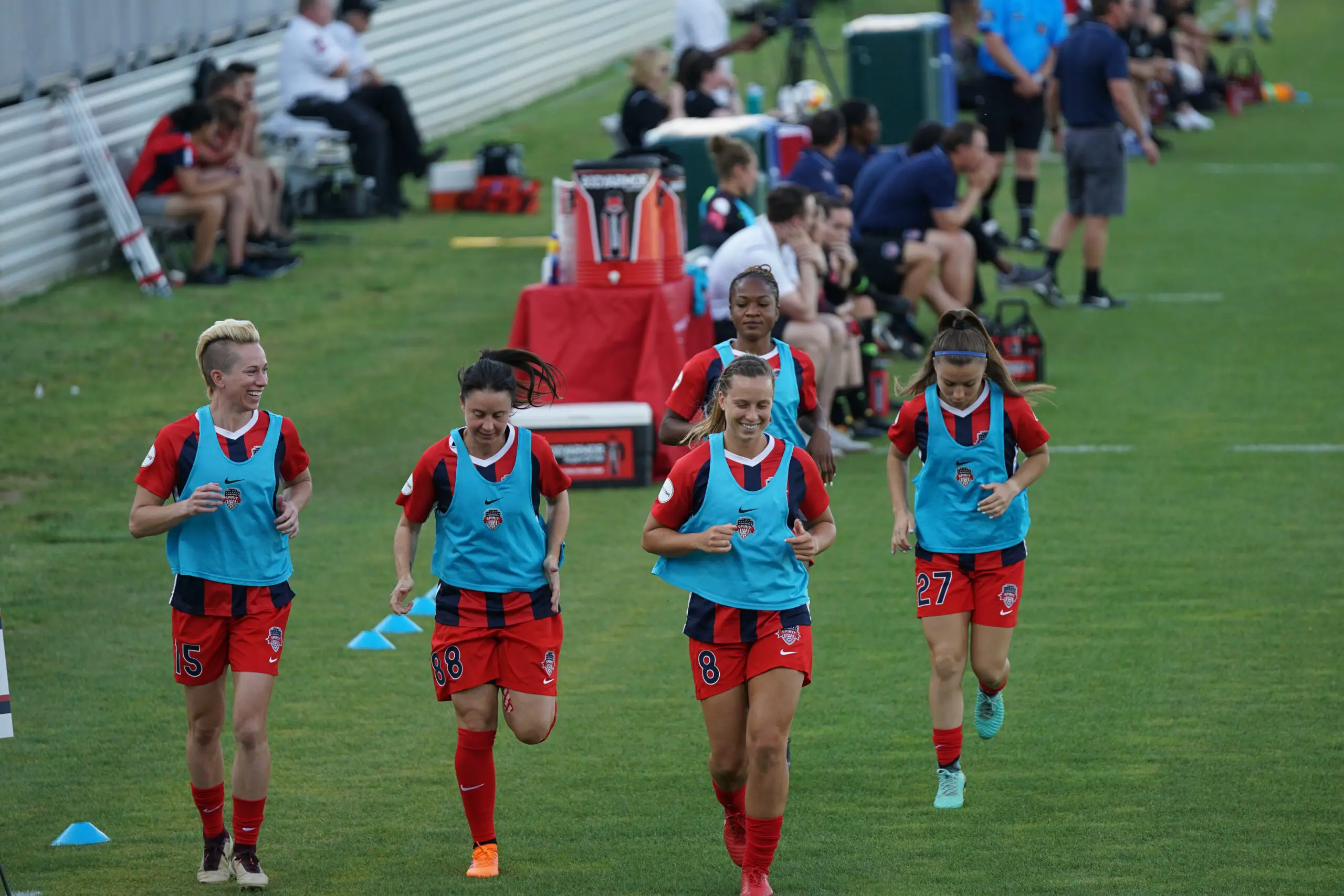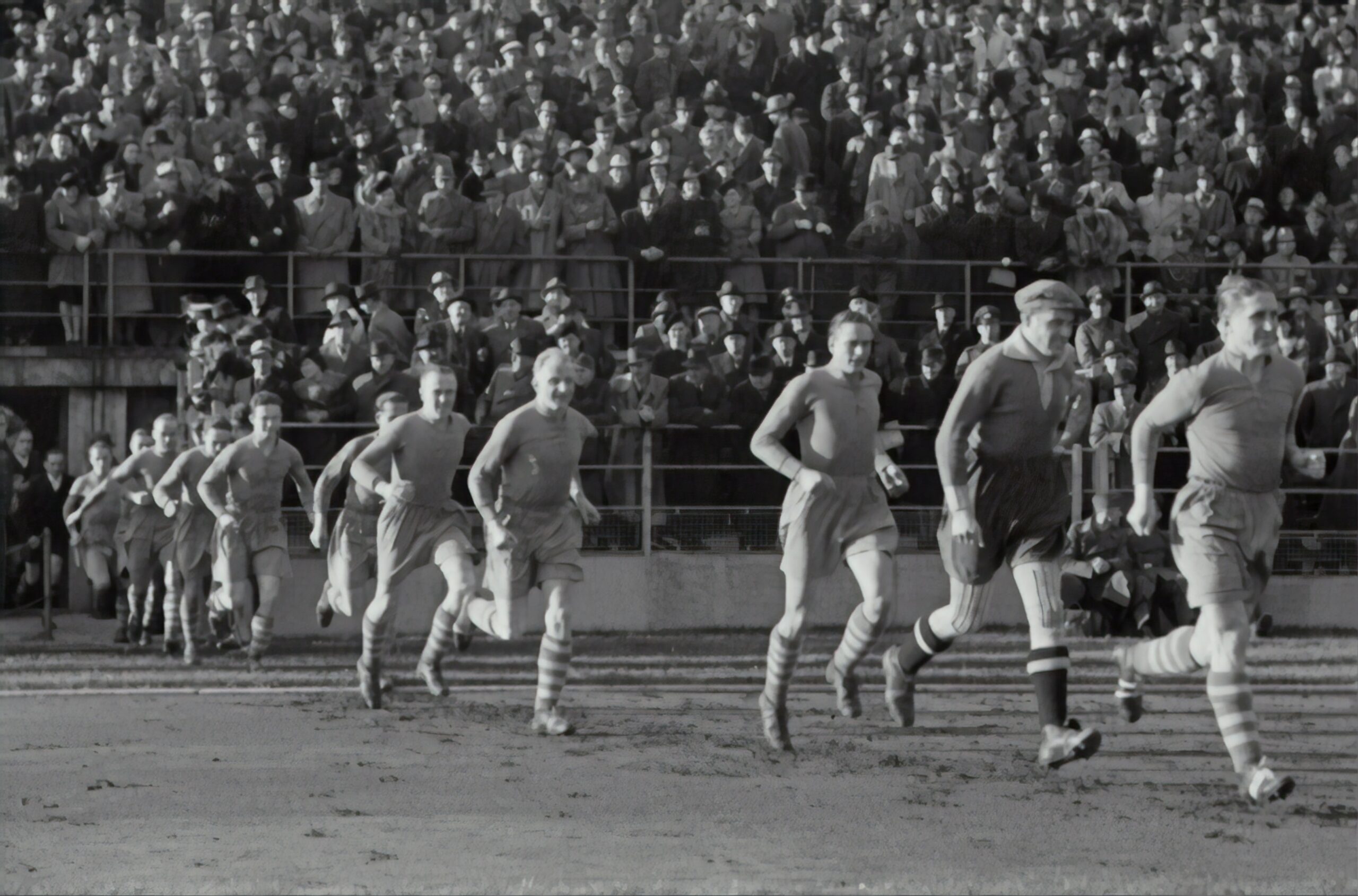Anyone who hasn’t played a soccer match or is new to the game may be wondering what soccer players do at halftime.
After all, after roughly 45 minutes, you will see them walk off the pitch and typically go through a tunnel.
However, where exactly are they going, and what are they doing during this span of time?
Now having played the game for over 14 years, I have therefore experienced many half-times.
Sometimes the procedure is normal, and other times it is different.
So in this post, I will share with you what actually goes on during halftime and what to expect if you’re thinking of joining a soccer team.
Table of Contents
1. Sit Down And Rest
Now first things first, it’s an opportunity for soccer players to get a rest.
Soccer is a sport that, at times, can be of high intensity.
Whether that be short lung-busting runs or just constantly jogging around a pitch, you never really get a moment’s rest.
One of the most important aspects and why half-time is in place is to allow for players to get a few minutes to break ready for the second half.
Now where players go to rest depends entirely on where your playing. I know from my own experiences it can really vary.
For example, if you are playing local soccer on an open field, they will likely either be a sports centre or portacabin within a few minutes.
This is not only the first place you will go when turning up to a match to get changed into kit, but it’s also where you will likely go for half-time to rest.
Now I say likely because not each time will you have the time to go back into the changing rooms to sit down.
Because if you play somewhere like in the screenshot below.
You will most likely go over to the side of the pitch with the rest of your teammates and sit down on the grass.

2. Listen To The Managers Feedback And Notes
You may have the idea now that players having a little nap for 15 minutes.
But let me tell you that is definitely not the case.
Instead, players will be sitting down while listening to what their manager has to say.
Another important aspect of halftime for soccer teams is not just time to rest but also to receive feedback on the first half and improve for the second half.
When your playing soccer, while you can see what’s going on around you, you don’t have that perspective that a manager has.
So a manager will take this time out to identify areas of weakness and maybe introduce tactics to fix them for the second half.
Also worth mentioning is depending how the game is going will dictate how intense the halftime talk is.
If some players aren’t pulling their weight, then that is a time where a coach will really let them know.

On the other hand, if your winning, a manager will congratulate their players on a good first half while making sure to let the players know not to be complacent over the next 45.
3. Rehydrating
From when soccer players leave the field to when they get back on there for the second half, they will have the opportunity to consume drink and food.
During these 15 minutes, soccer players will drink either water or an energy drink in light amounts to avoid any stitches in the second half.

As for food, depending on the club’s arrangements, fruit such as oranges and banana’s which are good for long-lasting energy, may be consumed.
From my experience playing local soccer, snacks aren’t provided, meaning you will need to bring them along with you to the game.
It’s also normal to have this food and drink, especially from my experience while the manager is talking to you.
4. Change Their Soccer Jerseys And Cleats
Now, backup cleats and kits can be brought along to games by football clubs that make enough money to support it.
So if a player needs to change the kit because it’s torn, has blood on it or because of the weather, then they can do so.
In rare cases, a whole team can completely change their kit as Manchester United did years ago for a cup tie.
The same goes for cleats, where footballers, especially professional ones, may change their cleats during the half-time period.
This could be because they are finding issues with the current footwear.
So they might change to boots of a different ground type.
All of this will typically take place at half-time. However, in some cases where a soccer player is having problems, they may try to fix them during the game.
Such as in the example below where Messi did it because of the heavy rain in Madrid:
The lower the level you play at, the less common it becomes because either the club or the players don’t have the funds to have clothing to change into in an emergency.
Saying that, though, if I play a game for my Sunday league team and I find my cleats aren’t working for the surface.
I will normally have different surfaced cleats in my sports bag that I can change into at half-time.
5. Warm Up Ready For The Second Half
At halftime, it’s normal to have a warm-up for the second half, even if it’s just a minute or two to loosen up.
However, depending on whether a player was on the pitch in the first half or is a sub will dictate the intensity and length of the warm-up.
If someone was playing in the first half, then a few minutes before the first half, they will do a few stretches and some short jogging.
This is because for the last 10 or so minutes, those soccer players would have been likely sitting down in the changing rooms, so this is important to prevent early injuries in the second half.
The subs will typically spend most of the half-time on the pitch or the side keeping warm by kicking a ball between each other and jogging around.

Your Typical Half-Time Summed Up
To sum up a half time for players in order of events, players will head to the locker rooms to have a break and rehydrate for roughly 10 minutes.
During this time in the locker rooms, a coach will talk to them about tactics and what areas to improve on for the second half.
The referee will then ring a bell, signalling for the players to leave the changing rooms and make their way to the pitch.
On the way out, a very quick warm-up will take place, taking 1-2 minutes.
Conclusion
So there you have it, that is half-time summed up from the point of view of a soccer players who has experienced a fair share of them.
For the most part, it’s uneventful and just consists of recuperating, ready for another half of soccer.
The higher the level of soccer, though, the more that happens.
Such as the changing of kit or even a soccer player being attended to by a club medic because of cramp or an injury picked up in the first 45.
However, for local soccer, it’s all just sitting down and listening to the manager while just intaking some fluids.
Do you play soccer? If so, what do soccer players do at halftime at your club?
You can drop your comments down below 🙂


 What Are Football Cones And Why Are They So Popular?
What Are Football Cones And Why Are They So Popular?